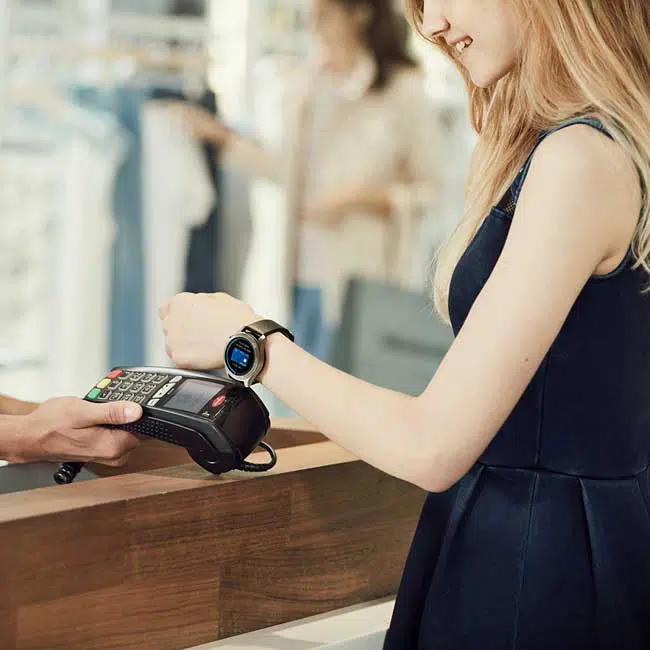Despite the slowdown in manufacturing as a result of the Covid-19 pandemic, shipments of wearable devices, which are often fitted for payments, are forecast to hit 396 million units in 2020, a 14.5% increase from 2019, says International Data Corp.
During the first half of 2020, 38% of all wearable devices had mobile-payment functionality via near-field communication (NFC) technology, no change from the first half of 2019, but the proportion could be set to grow dramatically. “Given how NFC—the primary connection for mobile payments—continues to gain salience, I’d expect almost half of volumes to have this capability by end of year,” Ramon T. Llamas, a research director for IDC, says by email.
Driving consumer demand for wearables is health and fitness and the devices’ ability to connect consumers to information. “Ever since the wearables market began in earnest, health and fitness has been the common denominator across many of them,” Llamas says. “We can go back and forth on how this has progressed: gamification of health, revealing insights to one’s health, making recommendations to live a better life, etc. The other part is connection. Wearables provide bite-size information from the smart phone, ranging from notifications and calendar updates to text messages and social media updates.”

Demand for hearable devices, which are ear-worn multimedia platforms for health and heart rate monitoring, entertainment, guidance, and cloud-based communications, was also strong. Hearables are expected to grow 14.1% annually through 2024. Watches, including smart watches and basic watches, are projected to grow 14.3% and wristbands 2.4% annually during the same period.
As the average price for a wristband drops below $40, there will still be room for more expensive models whose features mimic those found on smart watches, including mobile payments, IDC says.
One trend to watch is the emergence of services to complement wearables. Apple’s recently announced Fitness+, Amazon’s new Halo, and Fitbit’s Fitbit Premium, for example, connect users with health-and-fitness content, such as guided workouts, coaching, and diet advice, while incorporating data from their wearable device. Wearable devices and services that provide guidance and actionable insight will evolve together in the coming months, Llamas says.
Overall, IDC projects shipments of wearables to grow 12.4% annually and total 637.1 million units in 2024.
In related news, Loop Insights Inc., a provider of contactless and artificial-intelligence software, announced an agreement Monday to provide a non-exclusive license to property-technology provider CasaPerks LLC in return for $1.93 million in cash and stock. Austin, Texas-based CasaPerks’ platform allows application developers to build customer attraction, activation, and retention programs.
The deal calls for CasaPerks to license Loop Technology’s artificial-intelligence and data-insights portal and smart-app check-in and digital-wallet technology. CasaPerks will pay Loop Technology $250,000 in cash and 6.7 million shares of stock valued at $1.68 million, or 25 cents per share.
The deal, which requires approval from Loop Technology’s board of directors, is expected to close within 60 days.





